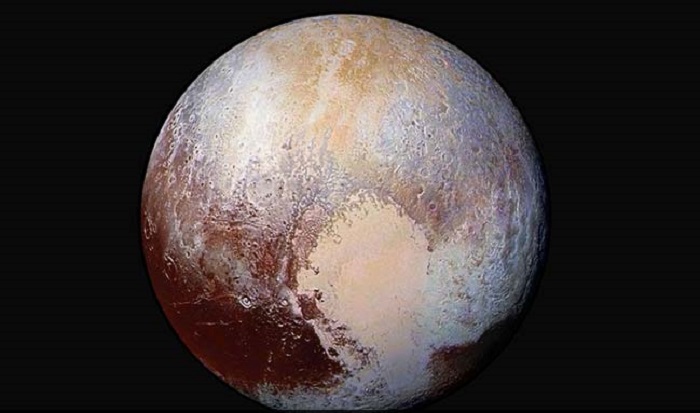First new horizons paper reveals `fascinating` Pluto

Colour images returned so far revealed a wide range of colours across Pluto`s surface, ranging from dark, red regions at the equator to brighter, bluer regions at higher latitudes.
A heart-shaped region interrupts this pattern by displaying different colours in its western and eastern lobes. Scientists suspected that the heart`s smooth, bright western lobe contains methane ice and carbon monoxide ice, while the dark red equatorial regions contain very little volatile ice.
"We knew Pluto`s surface was heterogeneous based on ground-based data," University of Maryland astronomer Silvia Protopapa, who helped map the composition of Pluto`s surface and locate ices on it, said in a statement.
"However, I was astonished to see such spectacular surface colour and geological diversity."
The data returned also showed a surprisingly wide variety of landforms on Pluto, including bladelike ridges standing hundreds of meters tall that form rippled, scaly patterns.
Another surprising finding is that a cluster of mountains on the edge of the smoothest part of Pluto`s heart may in fact be icebergs -- chunks of water ice crust floating in a deep pool of frozen nitrogen.
The smoothest part of Pluto`s heart, called Sputnik Planum, is also of interest. Scientists said the lack of impact craters in the region suggests the surface is at most 100 million years old.
The paper also said the dwarf planet`s radius, at 1,187 km, is smaller than previous measurements, which makes Pluto`s density higher and closer to that of its largest moon, Charon.
The study, which was published on Thursday in the US journal Science, also discovered evidence for a water-ice rich crust, multiple haze layers above the surface in Pluto`s atmosphere, and that Pluto is a bit more ice rich than expected.
"The Pluto system surprised us in many ways, most notably teaching us that small planets can remain active billions of years after their formation," said mission principal investigator Alan Stern, with the Southwest Research Institute.
"We were also taught important lessons by the degree of geological complexity" that Pluto displays, Mr Stern added.















































